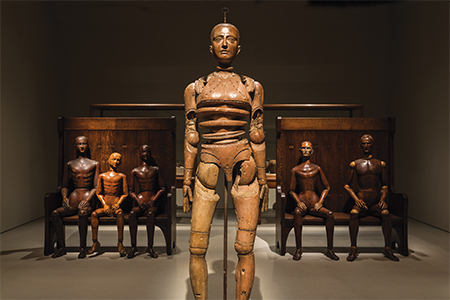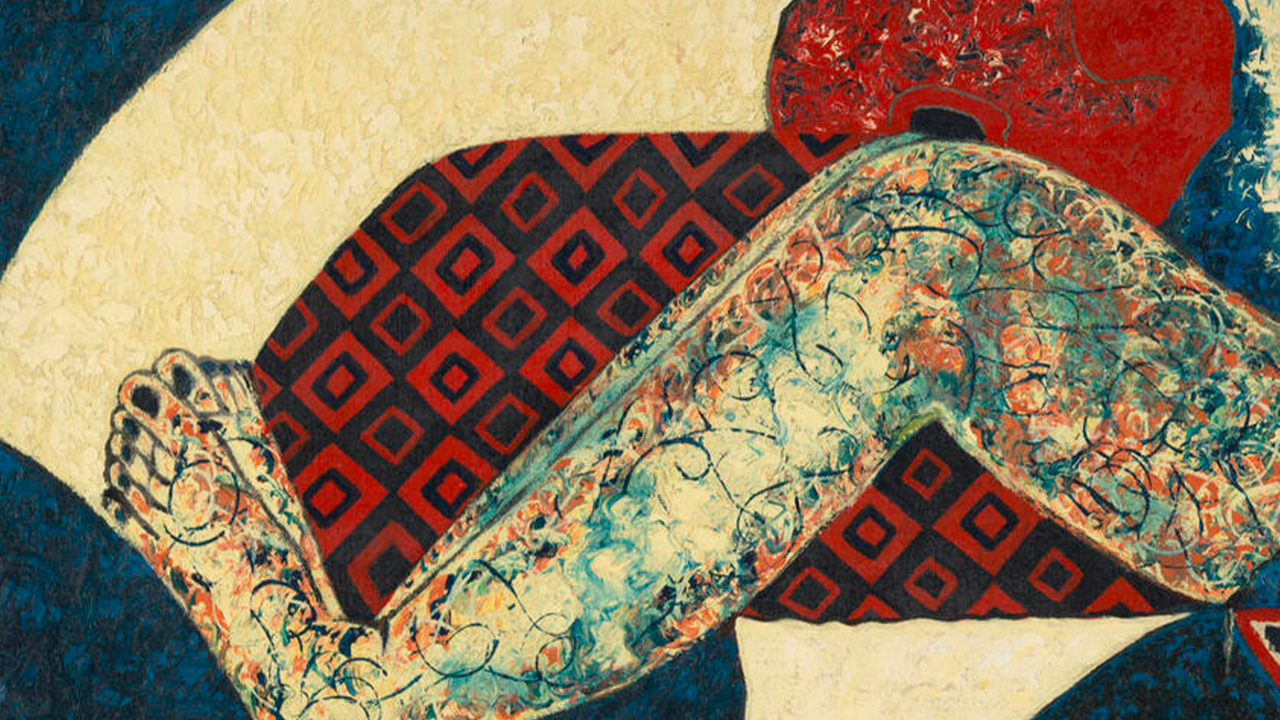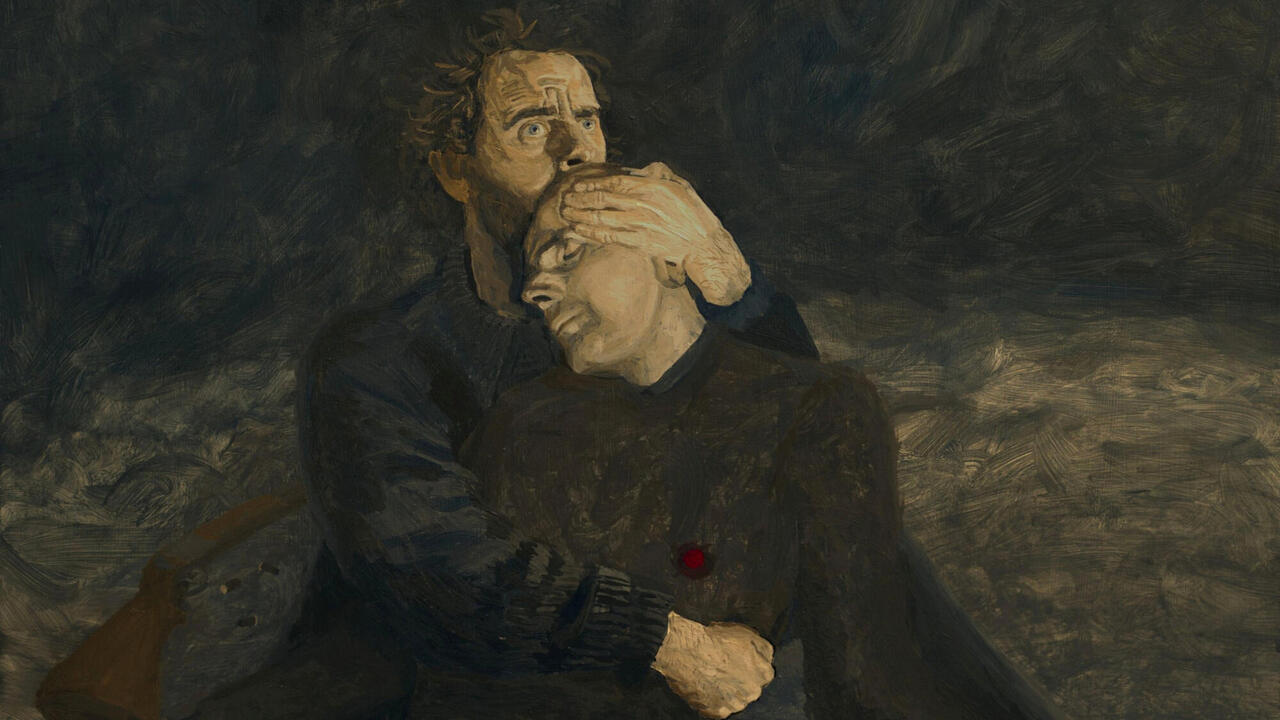The Art of Curating
The personal process of exhibition-making
The personal process of exhibition-making

A series of recent group exhibitions in London has employed artists in their curatorial capacities, while another has bucked the trend, showing a curator at her artistic best. What they collectively reveal are outdated hierarchies across curatorial practices.
The Hayward Gallery recently invited seven artists to respond to the slippery notion of ‘Britishness’ in ‘History Is Now: 7 Artists Take On Britain’. Approacheswere mixed. Richard Wentworth considered the country’s maritime preoccupation and the particular importance of the coastline to British modernism with an installation that included paintings, sculpture and Eduardo Paolozzi’s experimental short film, The History of Nothing (1963). Hannah Starkey created startling juxtapositions between works from the Arts Council’s photography collection, placing Paul Graham’s Baby, DHSS Office, Birmingham (1984) alongside John Benton-Harris’s Eton Parents Day, June 1976 (1976): Britain’s unforgiving class divide was rendered more repugnant for being shown through the lives of children. Subtle curatorial intelligence ensured that these varied installations hung together effectively.
Simon Fujiwara and Roger Hiorns went further, making whole works from curatorial form. Hiorns’s cluttered and claustrophobic installation reflected on the nation’s past obsession with the BSE virus, or Mad Cow Disease, which severely curtailed beef exports between 1996 and 2006. His installation of spot-lit news reportage, scientific documentation and tangentially related artworks, hung irrespective of taxonomy, created the foreboding effect of a forensic investigation unit. Fujiwara’s contribution considered the abstraction of labour from industrial to affective forms, questioning the impact this process has on the human body through a suggestive grouping of objects displayed on a grid of evenly spaced plinths. A Damien Hirst spot painting, laid horizontally, sat next to a number of empty supermarket herb bags. Between these – and other sterile items – sat a long, body-length freezer. Fujiwara and Hiorns’s object-constellations are full of suggestive ellipses and risqué syntheses.
The Barbican’s ‘Magnificent Obsessions: The Artist as Collector’, plumbed the personal collections of 14 artists. The show included Jim Shaw’s selection of found ‘thrift store’ paintings – famously gathered as part of an ongoing project – and Pae White’s collection of more than 3,000 Vera Neumann fabrics, which were artfully hung on diagonal washing lines as a colourful, billowing installation. Hanne Darboven’s knick-knack-laden studio and living room were reconstructed, complete with original furniture, before an installation of her photographic series, ‘Mitarbeiter und Freunde’ (Co-workers and Friends, 1988). Padded out with old rugs, worn tables, antique vitrines, cupboards and excess haulage cases, the exhibition proposed these artists as inspired hoarders and implied their curatorial arrangements were inherently meaningful.
A recent exhibition by London- and Hamburg-based artist Than Hussein Clark, ‘The Violet Crab’, at David Roberts Art Foundation (DRAF) reinvented the space as the setting for a cabaret club. The gallery was configured into a series of rooms – from cloakroom, bar and VIP room to shadow theatre and front- and back-stage areas. Clark’s sculptures, influenced by aspects of Kabuki theatre and surrealist aesthetics, functioned as furniture and, along with a selection of more than 60 artworks from DRAF’s own collection, set up the mise en scène for cabaret evenings, which took place over the course of exhibition. This indecorous mix raised the question: why aren’t more curatorial endeavours this entertainingly cavalier? Given that DRAF has an extensive collection and resources, does it really need to invite guest artist-curators to justify taking curatorial liberties?

The press materials for each of these exhibitions headlined the artist and sidelined the in-house curators. Why are artists celebrated for making instinctive choices about what unusual company artworks can keep, while curators are expected to adhere to accepted taxonomies? The difference is, perhaps, one of legitimacy, where daredevil subjective choices attest to artistic genius, while informed decisions prove the curator’s wisdom. But why, I wonder? How can we still presume that most exhibitions are, and should be, underpinned by objective logic when curators, as much as any of us, are guided by their own deeply personal responses to work?
Ydessa Hendeles – whose latest exhibition, ‘From Her Wooden Sleep …’, is at London’s Institute of Contemporary Arts (ICA) until 17 May – represents something of a curatorial iconoclast. Since the early 1990s, she has consistently displayed her art collection amid consumer objects, historical artefacts, found photographs and diverse ephemera, accumulated with the unerring obsession of an artist and the financial indulgence of a serious collector. These elements play off one another in highly considered trajectories, creating suggestive narratives of personal loss and political displacement. In ‘Partners’, her exhibition at Munich’s Haus der Kunst in 2003, her ‘Teddy Bear Project’ comprised thousands of old, anonymous black and white photographs of teddies, often accompanying and comforting their owners – young or otherwise. Hung salon style, this sentimental arrangement teed viewers up for the clout of their subsequent encounter: in an adjacent room sat Maurizio Cattalan’s Him (2001), a diminutive, child-like figure from behind, which is revealed to be a wax Adolf Hitler when viewed from the front.
Hendeles publicly denounces the concept of curatorial objectivity, instead calling her exhibitions ‘imaginative works’. The only daughter of German Holocaust survivors, she uses her subjective experience to political effect. Her compositions undermine an inherited taxonomy of things, while simultaneously challenging reductive notions of fixed identity and cultural authenticity. They have been imported whole into public institutions, commercial galleries and art collections, and immortalized in Agnès Varda’s short film Ydessa, the Bears and etc. (2004). At the ica, 150 wooden mannequins (collected by Hendeles over a period of two decades) are gathered on ecclesiastical furniture around an anatomical model that stands on a central raised platform. It is as though we fleshy outsiders have stumbled upon a mysterious transformation ceremony. Dimly lit and accompanied by a recording of Debussy’s ‘Golliwogg’s Cakewalk’ (1908), the encounter is haunting and purposeful in equal measure. Significantly, the ICA and Hendeles elected to employ a guest curator here, Philip Larratt-Smith: further evidence, seemingly, that when one curator gets audacious, another figure of wisdom must step in to oversee proceedings.
Hendeles is a great antidote to the ‘artist-as-collector’ or ‘artist-as-curator’ model precisely because her practice dissolves these reductive binaries: she is both of those and the reverse, and more besides. She is motivated by affect and has spoken of being ‘captured by the object’, trusting her instincts to create physical narratives that resound far beyond her own personal experience, like the brilliant, evocative, liberty-taking arrangements of Fujiwara, Hiorns, Clark and so many ‘curating’ artists before them.
In a political economy in which so much creative labour is affective, it seems remiss that subjective responses should be muted when it comes to the professional practice of presenting artworks. What Hendeles proposes is not a form of curating that is less intelligent – or intelligible – than that of her peers, but an option available to anyone with a capacity for the partial, indulgent, multi-rational interpretation of materials, and the wherewithal to apply this imaginatively. And, what’s more, it’s important. As viewers and consumers, communicating our responses to stuff, or images of stuff, connects us to one another and, in a world where ‘likes’ and ‘shares’ are being increasingly monetized, the exhibition might be one place where our acute reactions to affective material can be put to work more critically. To employ one’s subjectivity as a curator should no longer overstep any ethical boundary or professional code – to reflect on why, how and for whom we ‘like’ stuff is a political choice and, I would argue, a critical necessity.





















